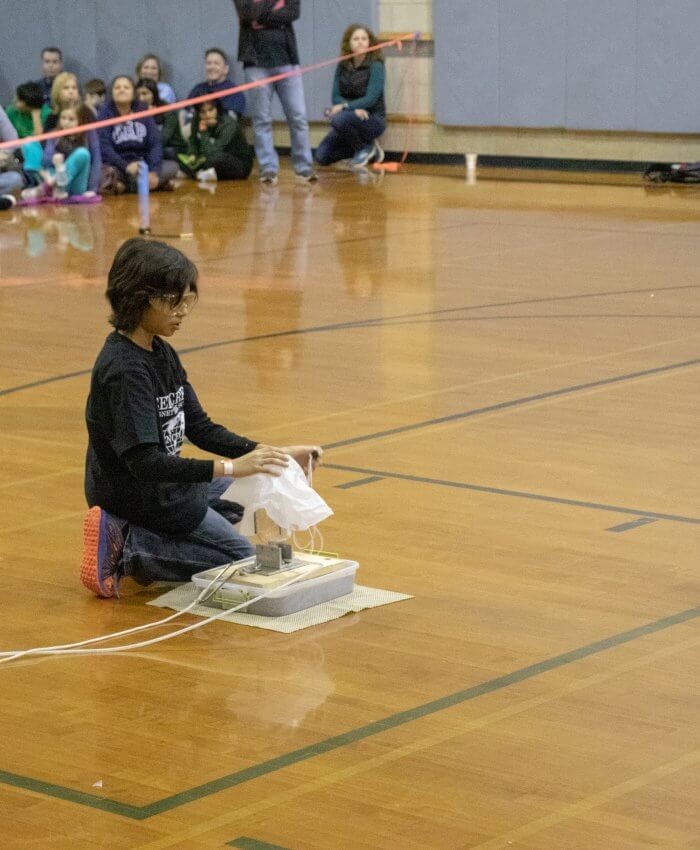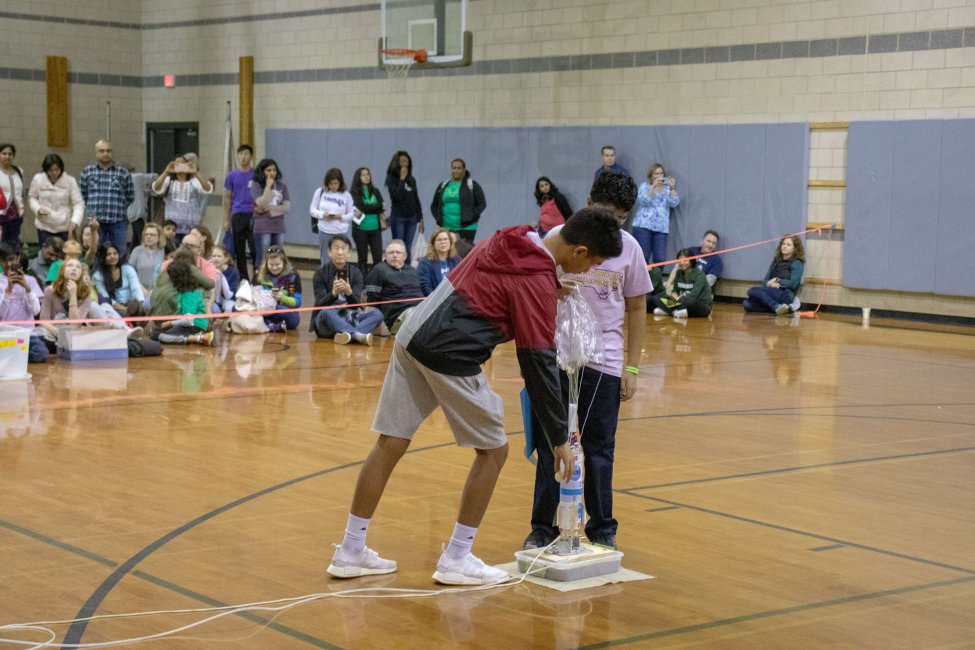Ping Pong Parachute
Division: A – Elementary School
NC Essential Standards Alignment: PS.5.2, PS.5.1, PS.4.1
SEP Practices: SEP 6
Event Rules: See 2025 Division A Rules Manual
Event Score Sheet: See 2025 Division A Rules Manual
National Event Page: Here
Clarifications: Parachutes must be built by the students. Purchased parachutes are not permitted.
Description:
Prior to the tournament, teams will design, build and bring up to two bottle rockets to launch a ping pong ball attached to a parachute to stay aloft for the greatest amount of time.
Materials:
Teams must bring and wear safety glasses, and provide up to two rockets, two unaltered standard ping pong balls, and two parachutes. Practice logs are permitted but not required.
Scoring:
- Ranking is determined by the greatest time aloft of a parachute payload system from a single launch within a tier.
- Rockets violating any safety rules will not be launched and will receive participation points only.
- Ties will be broken by the greatest time aloft of the parachute payload system from each tied team’s other launch.
- Tiers:
- Tier 1: A launch with no violations or problems.
- Tier 2: A launch where the parachute payload system did not separate from the rocket.
- Tier 3: A launch where the rocket or any part of the parachute payload system contacted the ceiling.
Common Mistakes:
– Be sure that the pressure bottle remains intact. Repeated testing and hard landings can damage your pressure bottle. Check it frequently for scratches and weak spots that may compromise the structural integrity, and replace the bottle as needed.
– If you remove the label from your pressure bottle, be sure to bring it to the competition or you will not be allowed to launch the rocket.
Recommendations:
– This event only requires safety glasses, meaning the kind that look like sunglasses will work just fine. These are MUCH easier to see out of. Your local home improvement store carries cheap versions for under $4. Safety goggles (the chemical splash kind that most schools have) have a tendency to fog up, making it hard to see.
– For transporting rockets with less risk of damage, glue/screw a bottle cap to a cardboard or wood base and simply screw your rocket onto it to make it stand up. For added protection, place this entire setup inside a 5 gallon bucket to protect fins, etc.
– Angling your fins slightly to one side will cause the rocket to spiral on its way up, creating stability much like throwing a football in a spiral.
Lesson Plans:
Event Resources:
Model F-Z Launcher from NERDS Inc
Model F-A Launcher from NERDS Inc
(The model F-A can be mounted to a board and used as an indoor launch pad for a lot less money.)

